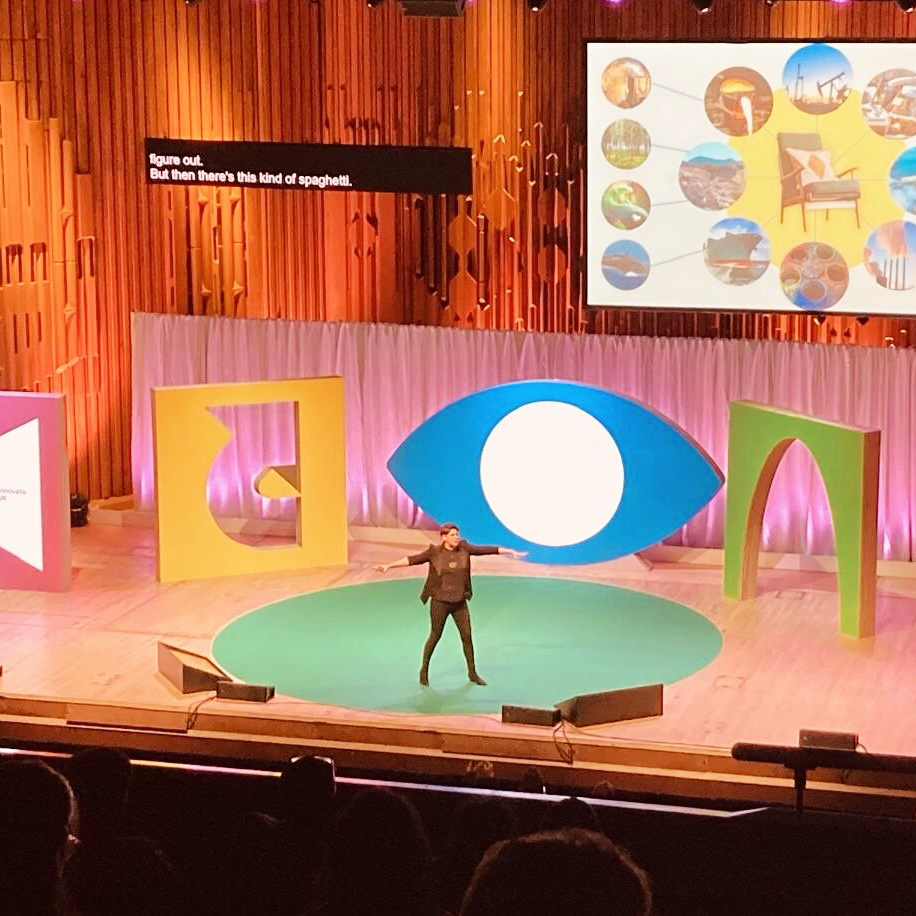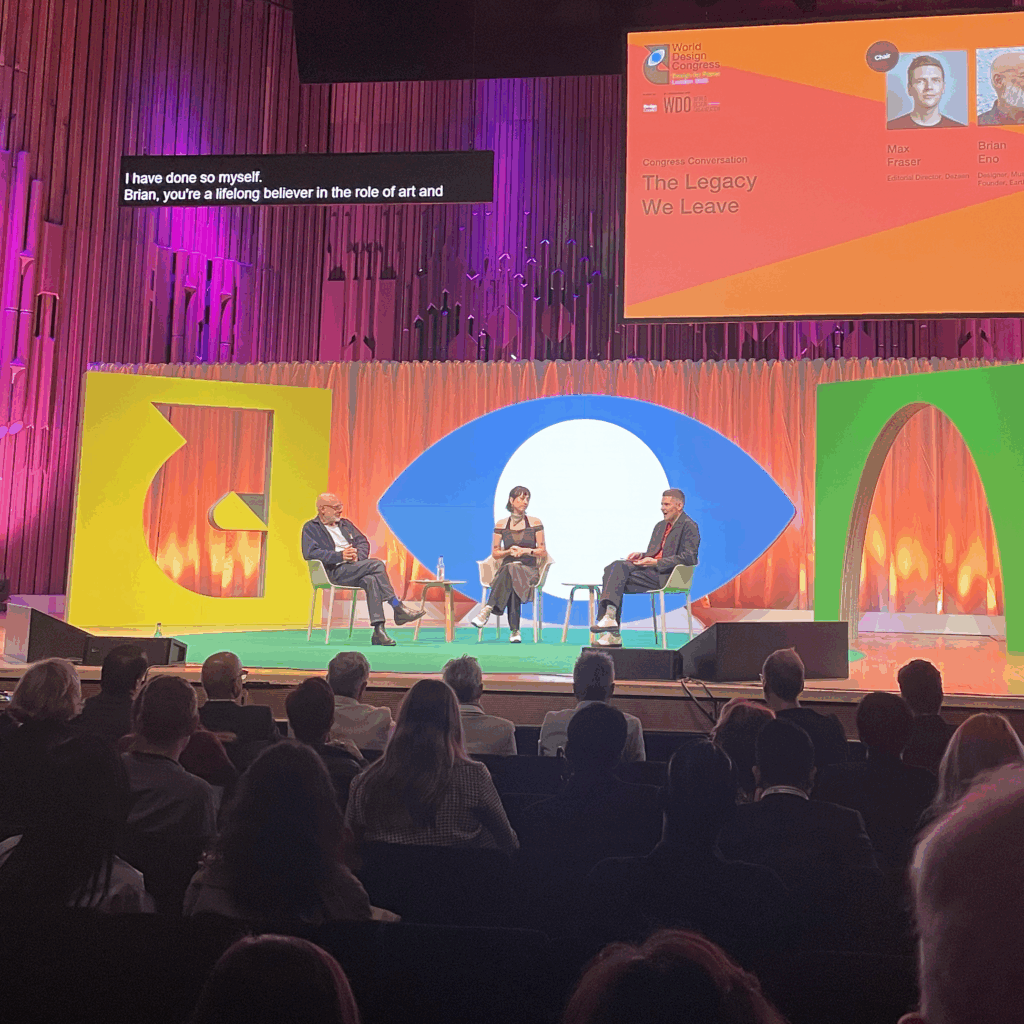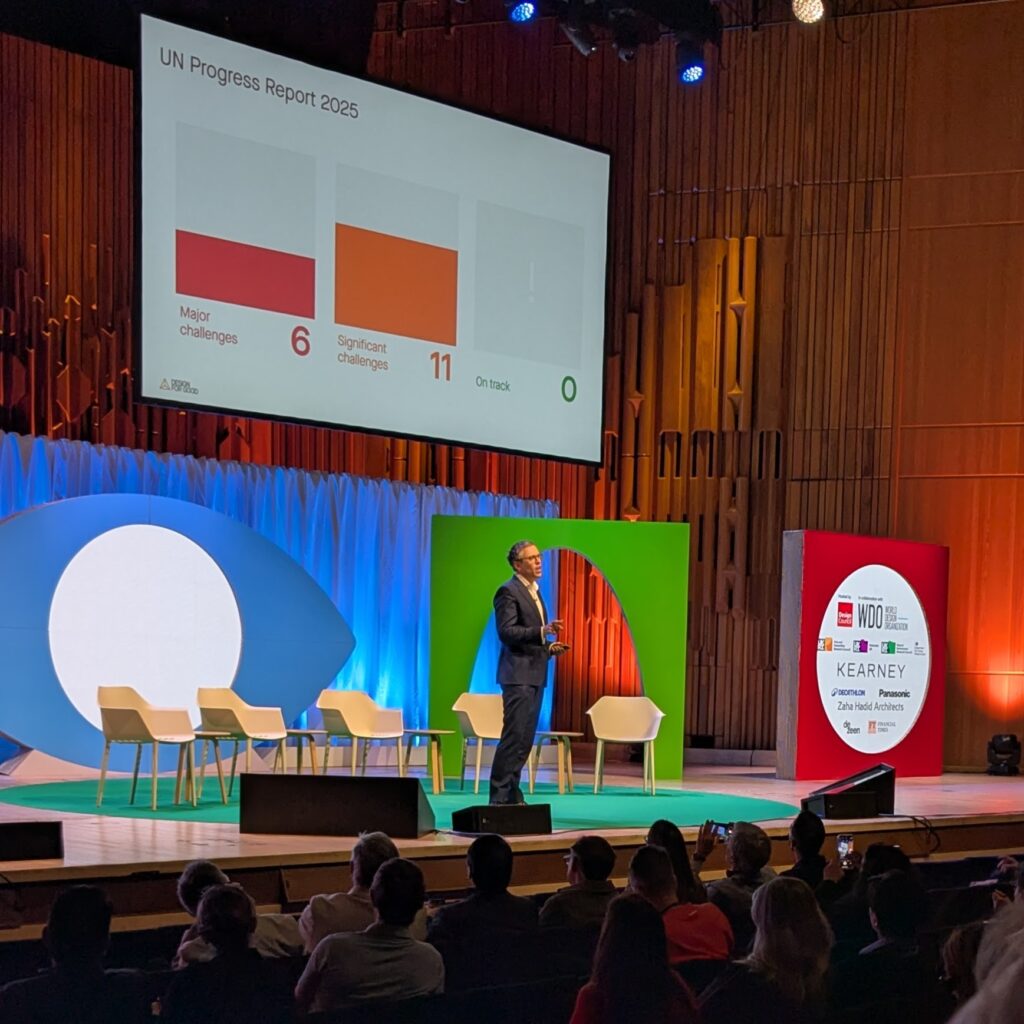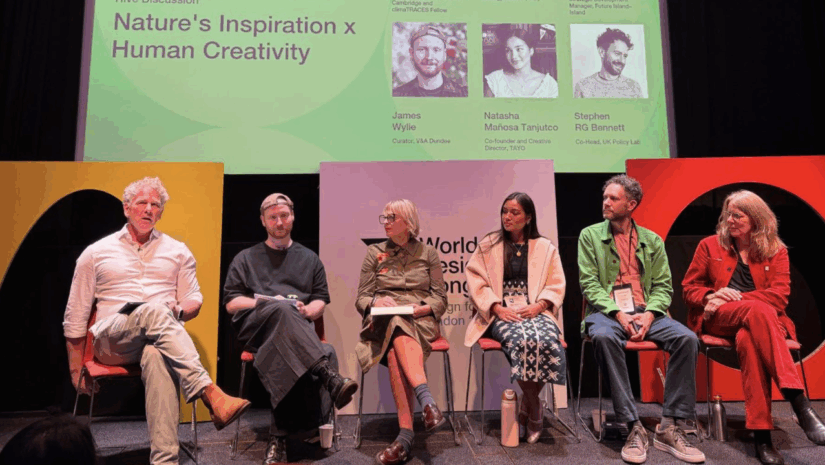Last week, we attended the World Design Congress at London’s iconic Barbican Centre. This event united a global creative community to tackle one of the most urgent issues of our time, climate change. We spent 2 days absorbing different perspectives on how design can play a role in tackling this challenge. Since the conference, we’ve been mulling over all the things we heard and sharing our reflections. Here are some of the highlights we keep coming back to in our conversations:

What if our designs met human needs in ways that respect other living things, that provide a regenerative force on the planet?
Ed’s reflection
As a researcher with a background in industrial design, the event was a powerful and, at times, quite confronting experience. The talk that resonated the most for me was by Leyla Acaroglu. She delivered a compelling and passionate narrative around the profound impact of consumerism and industrialisation on our planet.
She began discussing the continued relevance of indigenous wisdom and introduced the concepts of the Anthropocene, the current geological period defined by human impact. This was a concept new to me, but I recognised it well. Anthropocentrism is the belief that humans dominate nature, and as a consequence, there has been a dramatic decline in our connection to the natural world. Over the past 220 years, this connection has dropped by over 60%. She put it simply: we are facing a nature knowledge deficit. What does this mean? Essentially, because we don’t understand how nature works, we can make decisions that hurt it, and ultimately, at our own expense.
Despite recognising our impact, we are seeing new forms of colonisation and making the same mistakes we’ve been making since the industrial revolution. Where attempts have been made to solve problems, such as using electric energy to power vehicles, this has only led to the mining of the indigenous lands that we want to protect. We’re just masking our guilt. This presents a huge opportunity and responsibility for designers, instead of being the engine of consumerism, to lead the pathway to a regenerative future.
There are organisations pioneering in this space that develop this thinking. For example, the rights of nature movement is a legal and philosophical concept that grants legal protection to nature. Now with over 500 such laws globally, the shift from viewing nature as property to an interconnected Earth community partner is gaining momentum. As a design community, we have seen the shift from profit-centric to human-centric design. We are now seeing this evolve into life-centric and nature-positive design. But the core question posed was: “What if our designs met human needs in ways that respect other living things, that provide a regenerative force on the planet?”. This presents an exciting pathway for the global design community.
Riya’s reflection
I was struck by a powerful reminder from climate campaigner Tori Tsui:
As a designer and researcher, those words landed deeply. They reminded me that imagination isn’t just a creative exercise; it’s a responsibility. The systems, products, and futures we see today are the result of someone’s imagination. That means our role isn’t only to design what’s next, but to reimagine what already exists, and to do it with care, equity, and courage.
Brian Eno added another dimension to this:
This was another reminder: imagination flourishes in community. None of us can tackle challenges like the climate crisis on our own. But when we connect, collaborate, and celebrate each other’s efforts, we begin to create the collective energy that makes change possible.
What I learnt at the Congress is this:
- Imagination is power
- Design is a responsibility
- Community is the multiplier
As designers and researchers, we stand at the intersection of all three. And from that place, we have a chance, not just to create, but to reimagine the world.

So often, so many of us are at the mercy of what we decide to do with our imagination. What can be imagined, can be reimagined

We need to design a structured transition to a new reality that is emerging and will be fundamentally different
Geke’s reflection
There were many, and very powerful keynotes at the conference – Indy Johar, Julia Watson, Leyla Acaroglu – to name but a few. What they told us was not mind-blowing new facts, but they eloquently summarised the urgency and challenges related to climate change and planetary health.
A key moment for me in this respect was a slide that Ben Sheppard from Design for Good shared in his introduction to a panel session. He showed an infographic from the recently published UN Progress Report on the Sustainable Development Goals (SDGs). Their review of 10 years of progress on work across the 17 SDGs revealed that none of them are on track; only 11 show significant progress, while 6 are encountering major challenges. This is not a happy outcome.
In the panel session I was part of later in the day, someone in the audience asked us if we were still optimistic. I answered that perhaps ‘optimistic’ is too strong a word, as the climate situation is very dire and not at all close to getting better again, but ‘hopeful’ might be a useful word here. As creatives, we are able to summon up the energy to keep working towards improvements, and we are also good at energising and enabling other people and stakeholders to do so as well. For the complex system change that is needed, everyone will have to collaborate, from communities to policy makers, businesses, topic experts, etc.
Being strong, visionary, and creative thinkers, the keynote speakers at the conference thankfully gave us encouragement and inspiration to be hopeful and to keep going. For instance, Indy Johar made a strong plea for designers to develop new competencies and practices that help change the way we as humans relate to the world. What does nutrition look like in 25 years? Or farming and agriculture, water supply, mineral economy, energy future? We need to design a structured transition to a new reality that is emerging and will be fundamentally different. A new way of being with the world. A different relationship to nature. New ways of governing and organising together. Let’s embrace this really different world that is waiting to be designed.
